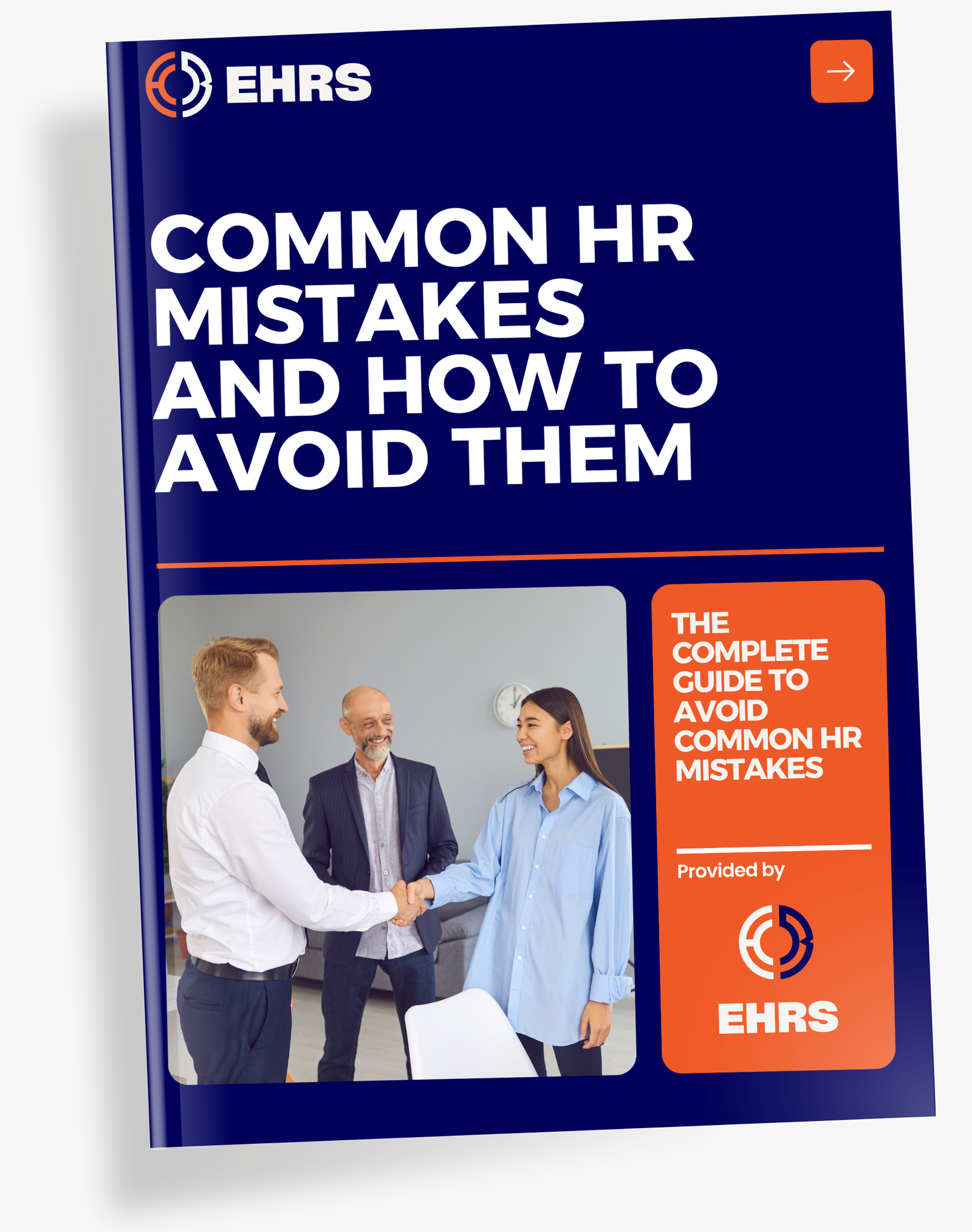Calculating employee turnover can feel overwhelming for HR professionals and managers trying to measure workforce stability.
This article simplifies the process by explaining the standard formula, industry-specific benchmarks, and practical examples to calculate employee turnover rate accurately.
You’ll also discover how analyzing turnover data reveals critical insights about employee retention, productivity loss, and strategies to improve workplace engagement while avoiding costly staff turnover.
What Is Employee Turnover Rate and Why It Matters
Employee turnover rate quantifies staff departures over a period, serving as a critical metric for organizational health. Companies analyze this data to assess workplace satisfaction, retention strategies, and workforce stability. Understanding turnover rates helps identify patterns that may impact business performance and talent management effectiveness.
Turnover manifests in various forms: voluntary (self-initiated departures), involuntary (employer-terminated roles), functional (beneficial changes like underperformers leaving), and dysfunctional (harmful losses of high performers). Each type reveals distinct organizational dynamics that require different management approaches to optimize employee engagement and retention strategies.
Industry benchmarks reveal significant turnover variations. Staff turnover rates in hospitality and retail often exceed 50%, while healthcare and manufacturing typically maintain lower average turnover rates. The U.S. Bureau of Labor Statistics reports monthly turnover rates of 2.4% in manufacturing and 3.6% in construction, establishing sector-specific reference points.
Estimated costs of employee turnover by position level, based on 2024 data
| Position Level | Turnover Cost (% of Annual Salary) |
| Average Employee | 50-75% (6-9 months of salary) |
| Entry-Level Employee | 30-50% |
| Mid-Level Employee | 100-150% |
| C-Suite Executive | Up to 400% |
The Standard Formula for Calculating Employee Turnover Rate
The standard turnover rate formula is (total departures ÷ average number of employees) × 100. This metric requires accurate data on employee exits and period duration for precise retention insights.
- Calculate the average number of employees by averaging beginning and ending number employees for the defined time frame.
- Document the number employees left during the annual, monthly, or period-specific turnover rate window.
- Apply (number employees left ÷ average number of employees) × 100 to determine turnover rate as a percentage.
- Compare turnover rates against industry data or internal metrics to prioritize retention strategies for workforce stability.
A company with 100 employees at period start experiences 5 employees left. Divide 5 by 100, multiply by 100 for a 5% turnover rate.
Apply the formula across monthly, quarterly, or annual time frames by adjusting the number employees left and average number parameters. This turnover rate calculate adapts to organization reporting metrics.
Alternative Approaches to Calculating Employee Turnover
The average headcount method calculates turnover using (departures ÷ average number of employees) × 100. This turnover rate calculate differs from the standard formula by incorporating both beginning and ending number employees in its calculation, providing a dynamic view of staff turnover across the time period.
Voluntary turnover rate focuses on self-initiated departures, calculated as (voluntary employees left ÷ average number of employees) × 100. Involuntary turnover rate tracks employer-initiated exits using (involuntary employees left ÷ average number of employees) × 100. Separating these types enables targeted retention strategies and workforce management interventions.
The average headcount method smooths seasonal turnover rates but may obscure critical data patterns. The standard turnover rate formula offers simplicity but works best for stable organization structures. High-growth companies benefit from tracking turnover metrics that include new employees or measure retention against total number of staff to align turnover calculations with business strategies.
The Business Impact of High Employee Turnover Rates
High turnover rates generate costs from recruitment, training, and productivity loss. Replacing an employee costs 33% of their salary, reaching 400% for high-skill roles. A company with employees earning $63,000 annually spends $23,625 per staff turnover.
Team productivity drops when employees leave, overburdening remaining people. Operational disruptions include management time spent on hiring and onboarding. U.S. businesses lose $1.8 trillion yearly in productivity loss.
Company culture weakens with high turnover, lowering engagement and retention. Customer experience suffers from inconsistent service. Zappos’s low turnover links to strong culture. Yelp data shows a 1.8-star metrics drop for high turnover firms.
Estimated costs of employee turnover by position level, based on 2024 data
| Position Level | Turnover Cost (% of Annual Salary) |
| Average Employee | 50-75% (6-9 months of salary) |
| Entry-Level Employee | 30-50% |
| Mid-Level Employee | 100-150% |
| C-Suite Executive | Up to 400% |
Interpreting and Analyzing Turnover Data Effectively
Segmenting turnover data by department, tenure, and demographics reveals actionable insights. For instance, Credit Suisse saved $70M annually by addressing manager-driven employee retention gaps. This approach highlights patterns like high turnover rates in specific teams or performance tiers.
Concerning turnover patterns include early employee exits (under 6 months) signaling recruitment mismatches or onboarding flaws. Late departures (2+ years) often reflect stalled career progression. Voluntary turnover spikes at bonus periods indicate compensation dissatisfaction, with 65% of workers seeking new roles for higher pay.
Contextual turnover goals align with industry benchmarks. In 2024, healthcare turnover averaged 18.4%, while financial services reached 19.8%. Companies should consider engagement scores, work-life balance policies and procedures, and leadership effectiveness when setting retention targets.
- Voluntary turnover rate: Track self-initiated exits to gauge compensation adequacy and career development opportunities.
- Involuntary turnover rate: Monitor employer-initiated separations to assess management effectiveness and role restructuring needs.
- Turnover rate by department: Identify high-risk teams for targeted interventions to improve retention strategies.
- New hire retention: Measure first-year exits to evaluate recruitment alignment and onboarding quality.
- Cost of turnover: Quantify financial impacts like recruitment and productivity loss to prioritize cost-effective strategies.
Compensation and Benefits Strategies to Reduce Turnover
Competitive compensation benefits directly influence employee turnover. A study reveals 28% of employees leave due to unfair salary structures. Regular market benchmarking ensures companies align pay with industry standards, reducing staff turnover rates by up to 44% in organizations with updated compensation strategies.
Customizable benefits improve retention strategies. Remote work options, health insurance, and professional development programs are top priorities for 97% of workers. For example, Microsoft reduced employee turnover rate by 18% through flexible work arrangements, while 92% of employees value health insurance as a critical benefit.
- Performance incentives like spot bonuses and peer recognition programs lower voluntary turnover by 31%. Average turnover rate drops significantly when employees receive regular feedback and rewards tied to company goals.
- Recognition programs that include non-monetary rewards, such as public acknowledgment, boost employee engagement by 55%. This fosters a culture of appreciation that directly impacts retention strategies.
- Retention bonuses linked to performance metrics reduce staff turnover by 22% in organizations with structured incentive programs. Clear performance criteria ensure fairness and alignment with business objectives.
Aligning performance incentives with career advancement opportunities strengthens employee retention. A survey found that 65% of workers seek new roles for better pay, emphasizing the need for dynamic compensation benefits. Structured incentive programs create a win-win scenario for companies and employees.
Career Development and Training Opportunities to Enhance Retention
Employees prioritize career development, with 74% of Millennials and Gen Z leaving without growth prospects. Companies using SMART objectives (specific, measurable, achievable, relevant, time-based) see 41% longer retention strategies. Clear progression frameworks reduce turnover rates by aligning individual ambitions with business needs.
Continuous learning drives employee retention, as 94% of workers stay longer when employers invest in their training. Panda Restaurant Group’s “University of Panda” and mentorship programs demonstrate effective skill development. 63% of employees cite limited advancement as their top reason for leaving, emphasizing development’s role in turnover reduction.
Mentoring boosts retention, shown by Sun Microsystems’ 23% improvement over five years. Mentor relationships reduce staff turnover from 19% to 9%. BNP Paribas’s program for refugee women highlights structured guidance’s impact on commitment and organizational stability.
Building a Positive Company Culture to Reduce Employee Turnover
Company culture shapes employee engagement and retention. Zappos’ happiness-focused approach correlates with low turnover rates. Research shows workers in positive environments stay 4x longer. Inclusive practices ensure people feel valued, directly impacting staff turnover through improved workplace satisfaction.
Leadership styles like servant leadership halve voluntary turnover. Autocratic management drives disengagement. Gallup links 70% of employees leaving to poor management rather than compensation. Servant leadership firms report 50% lower turnover rates due to stronger employee connections.
Transparent communication reduces uncertainty, with 4.5x higher retention in firms with open dialogue. During organizational changes, explaining decisions makes workers feel included. Chalhoub’s feedback culture improved retention strategies, while Bright Horizons’ tuition assistance boosted employee commitment by 80%.
- Open communication channels ensure staff understand business priorities, reducing turnover by aligning people with organizational goals.
- Anonymous surveys and town halls create safe spaces for employee feedback, with 70% of participants feeling more committed when heard.
- Actionable feedback drives 61% engagement in companies with structured response systems versus 45% without, directly improving retention strategies.
Work-Life Balance and Flexibility to Prevent Employee Burnout
Workplace flexibility reduces employee turnover rates by 4x compared to rigid environments. HubSpot’s unlimited vacation policy and flexible work arrangements align with 89% of workers seeking hybrid or remote work. Employees with autonomy demonstrate higher retention strategies due à better work-life balance and job satisfaction.
Wellness initiatives lower turnover rates by 60% for employees receiving mental health support. Walgreens’s focus on physical and emotional well-being correlates with 87% of workers selecting employers based on wellness programs. Companies investing in stress management and employee engagement retain talent more effectively than peers without structured initiatives.
Excessive workloads drive 34% of French employees into burnout (2022 data). Effective resource management prevents burnout through clear boundaries and task delegation. Organizations prioritizing reasonable workload see 22% lower staff turnover than those neglecting this metric.
Recruitment and Onboarding Strategies for Long-Term Retention
Hiring for cultural fit reduces early turnover by 44%. SHRM data shows cultural misalignment costs 50-60% of an employee’s salary. Aligning recruitment with organizational values ensures candidates match company expectations, improving retention strategies and reducing mismatch-related exits.
Structured onboarding boosts retention by 82%, per Glassdoor. Facebook’s pre-configured systems enable new employees to start working within 45 minutes. Comprehensive programs include pre-boarding, orientation, mentorship, and 12-month integration phases, enhancing engagement and clarifying role expectations.
Realistic job previews (RJP) lower turnover by 25% in the first year. By disclosing job realities (e.g., 60% teaching vs. 20% research in academia), candidates self-select out if misaligned. This transparency reduces unmet expectations, a top reason for early employee exits, ensuring better retention outcomes.
Comparative Analysis of Turnover Reduction Strategies
Effective turnover strategies vary by cost, implementation difficulty, and workforce impact. Retention programs like flexible schedules and career development cost 20-30% less than recruitment but reduce staff turnover by 40%. High-touch management approaches demand more time but yield 23% higher retention through mentorship.
Comparative effectiveness of turnover reduction strategies by cost, complexity, and impact
| Strategy | Cost Range | Implementation Complexity | Retention Impact | Best Suited For |
| Competitive compensation | $5,000-25,000 per role annually | Moderate (market research + adjustments) | Reduces voluntary turnover by 44% | Entry-level to mid-level employees |
| Flexible work arrangements | $1,500-8,000 per employee annually | Low (infrastructure adjustments) | 4x higher retention in hybrid roles | Remote-capable teams |
| Mentorship programs | $2,000-10,000 per mentee-year | High (training + matching) | 9-23% lower turnover rates | High-potential talent |
| Wellness initiatives | $500-3,000 per employee annually | Low (vendor partnerships) | 60% reduction in burnout-related exits | Stress-prone industries |
Understanding turnover rate calculation (number of employees left / average number × 100) empowers businesses to identify retention gaps and reduce turnover costs. Prioritizing data-driven strategies—like competitive compensation and career development—today ensures measurable improvements in staff engagement and productivity. By aligning turnover management with organizational goals, companies transform workforce stability into a competitive advantage, fostering long-term success through a motivated, high-performing team.
Frequently Asked Questions (FAQ)
What is a good employee turnover rate?
A good employee turnover rate is generally considered to be 10% or less, which corresponds to an employee retention rate of 90% or more. While some level of staff turnover is natural and unavoidable, the ideal rate can vary significantly depending on factors such as industry, company size, and economic conditions. It is important to note that not all retention is necessarily beneficial. To minimize costs and improve productivity, it is preferable to retain engaged and high-performing employees. Keeping disengaged staff can negatively impact team morale, productivity, and a company’s attractiveness, potentially hindering innovation and creating toxic work environments.
How to calculate employee turnover in Excel?
To calculate the employee turnover rate, you should use the formula: (Number of departures / Number of employees at the beginning of the period) x 100. This method quantifies the proportion of employees who left the company over a specific timeframe, such as a month or a year. When implementing this in Excel, ensure that the “Number of employees at the beginning of the period” strictly refers to existing staff and excludes any new hires made during that same period. This approach, consistent with standards like ISO 30414, provides an accurate and precise turnover measurement, avoiding confusion that could arise from including new recruits in the base headcount.
What are early warning signs of turnover?
Early warning signs of employee turnover often include a deterioration in work attitude, manifesting as increased negativity, irritability, or a loss of enthusiasm. You might also observe a noticeable decline in work quality or productivity, leading to delays or subpar results. Other indicators include disengagement, visible through reduced contributions in meetings or a lack of interest in projects, and unusual or frequent absences. Additionally, evasive behavior such as minimizing screens when approached, increased activity on professional networks, or a sudden shift in career focus can signal an impending departure.
Who is responsible for managing employee turnover?
Managing employee turnover is a shared responsibility across an organization, involving several key players. Leadership and managers hold a central role, as effective leadership, clear communication, consistent feedback, and fostering career development opportunities are critical for employee retention. HR professionals also bear significant responsibility for tracking turnover data, implementing retention initiatives, and ensuring competitive compensation and benefits. Ultimately, business owners are accountable for understanding the impact of high turnover and cultivating a company culture that promotes employee stability and engagement.
What software helps track employee turnover?
Employee retention software helps organizations track and manage employee turnover by providing valuable insights into employee behavior, satisfaction, and performance metrics. These advanced tools analyze various data points to inform and optimize effective retention strategies. Such software platforms typically include features for employee engagement and feedback, recognition and reward systems, and robust analytics and reporting capabilities. Examples like Workday Peakon Employee Voice can even forecast attrition risk using AI, helping organizations make data-driven decisions to proactively address disengagement and reduce costly turnover.
How to reduce turnover in small businesses?
To reduce turnover in small businesses, it is crucial to prioritize effective communication through clear channels and active listening, and to offer competitive compensation and benefits that extend beyond just salary, including flexible work arrangements. Investing in training and development opportunities demonstrates a commitment to employee growth, which significantly enhances retention. Furthermore, cultivate a positive and inclusive work culture where employees feel genuinely valued and recognized for their contributions. It is also essential to focus on hiring the right people who align with the company’s values from the outset, and to leverage data analytics to understand the specific causes of turnover and evaluate the effectiveness of retention initiatives.





